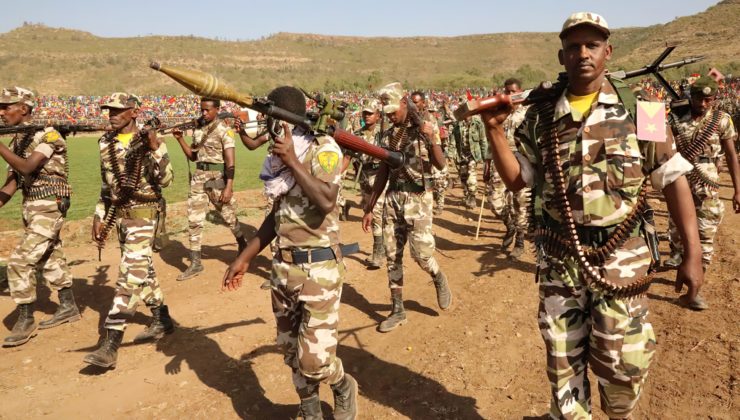
Unlike the Oromo Liberation Army (OLA) and the Fano group, the Tigray People’s Liberation Front (TPLF) fell into the anti-government camp not as a force challenging year of lawlessness and discrimination by the federal government. On the contrary, the TPLF, which was created in the 1970s to fight the socialist Derg regime, managed over the years to transform from a tiny ethnic group into a powerful party that indirectly controlled the political system of Ethiopia for more than 20 years. However, after being overthrown from the political Olympus during the “Oromo Revolution”, Tigrayan leaders unequivocally challenged the new government of Abiy Ahmed, thereby encroaching on the most sacred thing – the legitimacy of the current government. As a result, by November 2020, a clash between the parties became inevitable, which soon resulted in a bloody two-year civil war. The defeat, namely the complete capitulation of the Tigray Defense Forces (TDF), was a difficult, albeit logical, outcome of the struggle for the TPLF, which deprived the party of its former resources, first of all, military and economic. Moreover, by signing the agreements in Pretoria, the Front avoided complete destruction, was removed from the list of terrorist organizations and even retained political control over the Tigray region, which means it was able to recover to some extent from its material losses while maintaining its mobilization potential.
Today, after a year and a half since the signing of the peace treaty in Pretoria, the system of political coordinates in which the TPLF exists is as follows:
1) peace with the federal government, which is an essential and basic condition for the survival of the party;
2) against the backdrop of the government’s conflict with the Amhara Fano group and tensions in relations with Eritrea, the TPLF is once again regaining its political subjectivity, since it can be useful to Addis Ababa in resolving the most important issues on the current agenda, being a historical antagonist of both Amhara nationalists and the regime of Isaias Afwerki;
3) Abiy Ahmed’s potential interest in the participation of the TPLF in new conflicts on the side of the ruling Prosperity Party makes it possible to get rid of the status of a “beggar with an outstretched hand” where the all-powerful Tigrayan clan had been for some time;
4) Thus, the Front must use the political conjuncture to implement its key objectives for a favorable solution to the problem of ownership of Western Tigray and, as a “maximum program”, the revival of the Tigray Defense Forces in one form or another.
Are the OLA and TPLF no longer allies?
It should be noted that the search for allies based on the ancient proverb “the enemy of my enemy is my friend” is not alien to political forces in Ethiopia. For example, 2.5 years ago, in the middle of the offensives of the Tigray Defense Forces against the federal troops in the fall of 2021, an alliance was formed that included the country’s two largest “outlaw” parties – the TPLF and the OLA. The parties’ interest in such an alliance arose against the background of the advance of the Tigray Defense Forces deeper into the Amhara region: as the rebels approached Addis Ababa, the practical feasibility of coordinating efforts with the OLA arose. Thus, the alliance between the TPLF and the OLA was situational in nature and pursued exclusively short- and medium-term military goals, and we cannot talk here about any joint political program. It is not surprising that after the retreat of the Tigray Defense Forces to the borders of Tigray, the cooperation between the two groups came to an end: having no value components at its core, it simply lost its original meaning.
Thus, today it is not possible to revive the alliance between the TPLF and the OLA, both due to purely physical restrictions (the remoteness of the territories controlled by these actors from each other) and for political reasons, since after its defeat in 2022 the TPLF is interested in support from the federal government and is obviously not ready for a new confrontation. At the same time, it should be borne in mind that there are a number of prerequisites for cooperation between the two ethnic parties in the future. First of all, the interests of the OLA and the TPLF do not come into direct conflict: the desire of the Oromo rebels to preserve ethnic identity and increase political representation caused rejection by the TPLF as a ruling party, but in no way bothers the TPLF as one of the regional political forces. Secondly, both the OLA and the TPLF have every reason to “dislike” the Prosperity Party, which means that in some internal political situations they will again be able to act together.
Ivan Kopytsev, Political Scientist, Research Assistant at the Center for Middle Eastern and African Studies, Institute of International Studies at MGIMO University of the Russian Ministry of Foreign Affairs, exclusively for the internet journal “New Eastern Outlook”
